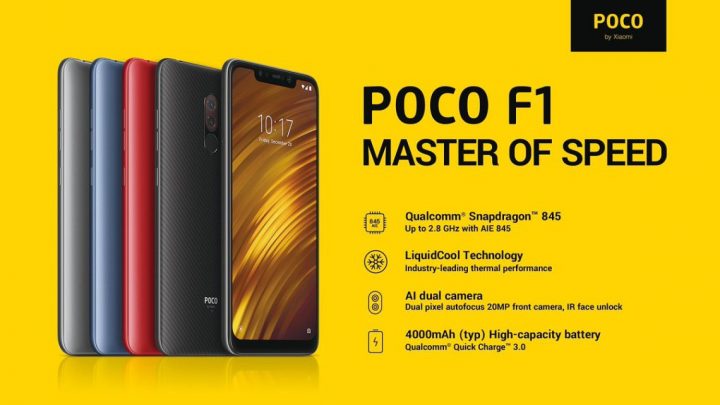
Recently, the POCO F1 was launched by Xiaomi‘s new sub-brand, Pocophone. The launch proved that smartphone manufacturers have started to acknowledge the rising number of power users on a shoestring budget. With the F1, the company is offering the latest flagship silicon from Qualcomm, the Snapdragon 845, at an unbelievably budget price of INR 21,000.
POCO F1
The phone promises to offer a flagship experience at a budget price. Such a practice always entails cutting corners, and while that is the case with the F1, those aren’t necessarily dealbreakers. Everything that makes the experience great is present and accounted for. A great display, best-in-class cameras, stellar battery life and blazing-fast performance. The omission of OIS on the primary camera and the absence of a premium build are sorely missed. But Pocophone has done it’s best to overcome the price limitations. The EIS provided does a pretty bang-up job of stabilizing the videos. And the device’s body, although polycarbonate, offers excellent build quality. And costing INR 21,000 for the 6+64 variant, this phone is the most complete package you can get for the price.
Impact on the Industry
While the POCO F1 impressed me as the device it is, it also has me excited for what the future holds. The jaw-dropping price tag has sent the industry in a frenzy. The big-name brands are finding it harder to justify the premium prices they charge for their flagships. The rise of brands such as Pocophone and OnePlus has started to put pressure on these manufacturers. In this era, when manufacturers have started charging close to INR 1,00,000 for their phones, companies such as Pocophone are very important to provide the average consumer with a flagship experience at an affordable pricing.
We shared the stock wallpapers from the POCO F1 a few days ago in full HD+ resolution. You can download them here.
Conclusion
With such an experience at a budget price and with no competitor in sight, it is in a position where it can change the landscape of the phone industry. Even then, it has to deal with the problems that come with launching a new phone brand. But with Xiaomi’s backing in the form of its software teams and it’s support infrastructure, Pocophone can really make a place of its own in the market. Regardless, it is the support they’ll get from the consumers that’ll either make or break them. These incredibly affordable flagships are only viable if lots of people buy them as we have seen in the case of OnePlus. So Pocophone really needs to make its case with the POCO F1 and by getting the pricing right, I think they’ve taken the first step.



Join The Discussion: